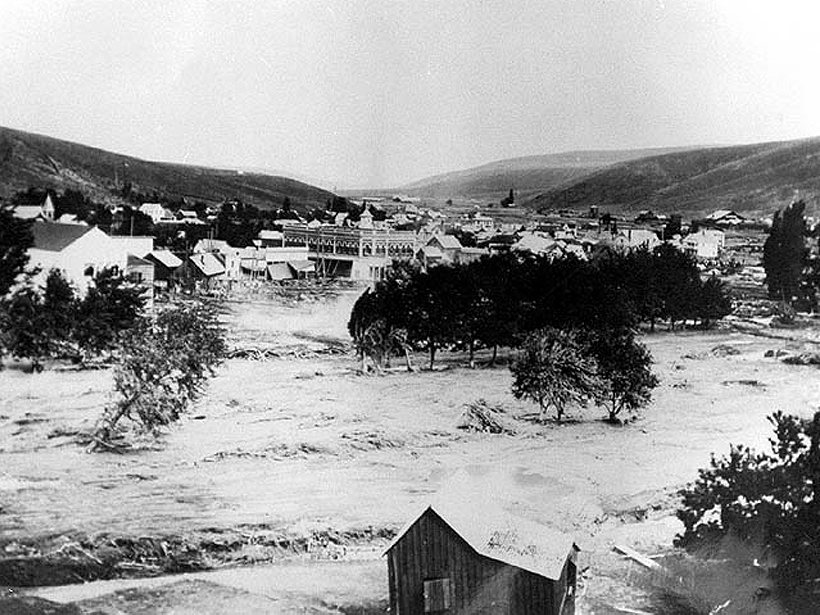Source: Water Resources Research
On 14 June 1903, a massive swell of water overwhelmed the small town of Heppner, Ore., killing more than 250 people. Ordinarily, floods are reported in probabilistic terms: A 10-year flood, for example, describes streamflow conditions that have a 10% (1 in 10) chance of occurring within any given year. But the Heppner Flood was so extreme that it defied standard descriptions. At its peak, the flood was more than 200 times larger than the discharge of a 10-year flood.
“Strange” is not an adjective commonly applied to floods and other natural disasters, but Smith et al. argue that it may be the most appropriate descriptor for extreme and unusual flooding. The Heppner Flood, they argue, may have been one of the strangest floods on record. It was triggered by an intense hailstorm in June, in a region where spring snowmelt typically drives peak annual streamflow. These conditions are characteristic of strange floods, which they define as extreme events triggered by circumstances that contrast with the common flood-generating mechanisms in a region.
The researchers examined extreme floods across several decades in the conterminous United States, using annual flood peak observations from more than 8,000 U.S. Geological Survey stream gauging stations. They developed a statistical framework they call the “upper tail ratio,” in reference to the upper tail of a statistical distribution, where rare events reside. The upper tail ratio is defined as the peak discharge for a flood of record, divided by the stream’s 10-year flood magnitude. The 1903 Heppner Flood registered an upper tail ratio of 200, topped only by the 1976 flood caused by the bursting of the Teton Dam.
The team discovered that record floods share many traits. In the western United States, severe flooding is linked to mountainous terrain and intense thunderstorms; in the east, it occurs in coastal regions susceptible to tropical cyclones. Major floods also have a different seasonal distribution than annual peak flow events: Annual flood peaks across the United States tend to have winter or spring maxima, whereas the strange floods in the upper tail nearly always occur in the warm season.
In addition to the analysis of floods across the United States, the authors provided a case study of the Blue Mountains, the setting for the Heppner Flood and other strange floods in the 1950s and 1960s. In the case study, they examined the hydrology, hydrometeorology, and hydroclimatology of the extreme floods in the region.
Strange floods are the least expected and most damaging floods, but their infrequency can make them difficult to study. The analysis offers insight into extreme floods and provides a platform for comparing floods around the world to those in the United States. (Water Resources Research, https://doi.org/10.1029/2018WR022539, 2018)
—Aaron Sidder, Freelance Writer
Citation:
Sidder, A. (2019), The meteorological culprits behind strange and deadly floods, Eos, 100, https://doi.org/10.1029/2019EO114823. Published on 04 February 2019.
Text © 2019. The authors. CC BY-NC-ND 3.0
Except where otherwise noted, images are subject to copyright. Any reuse without express permission from the copyright owner is prohibited.

